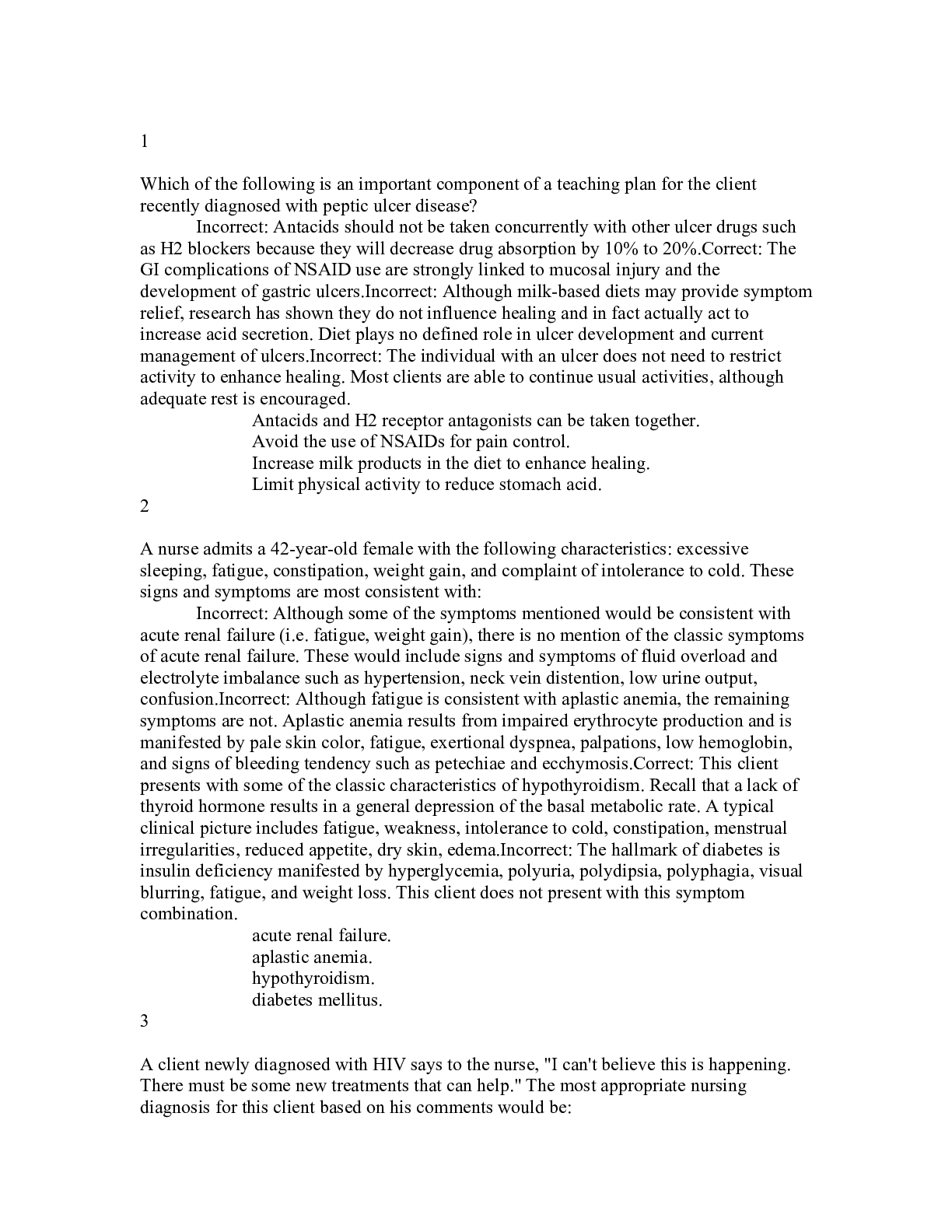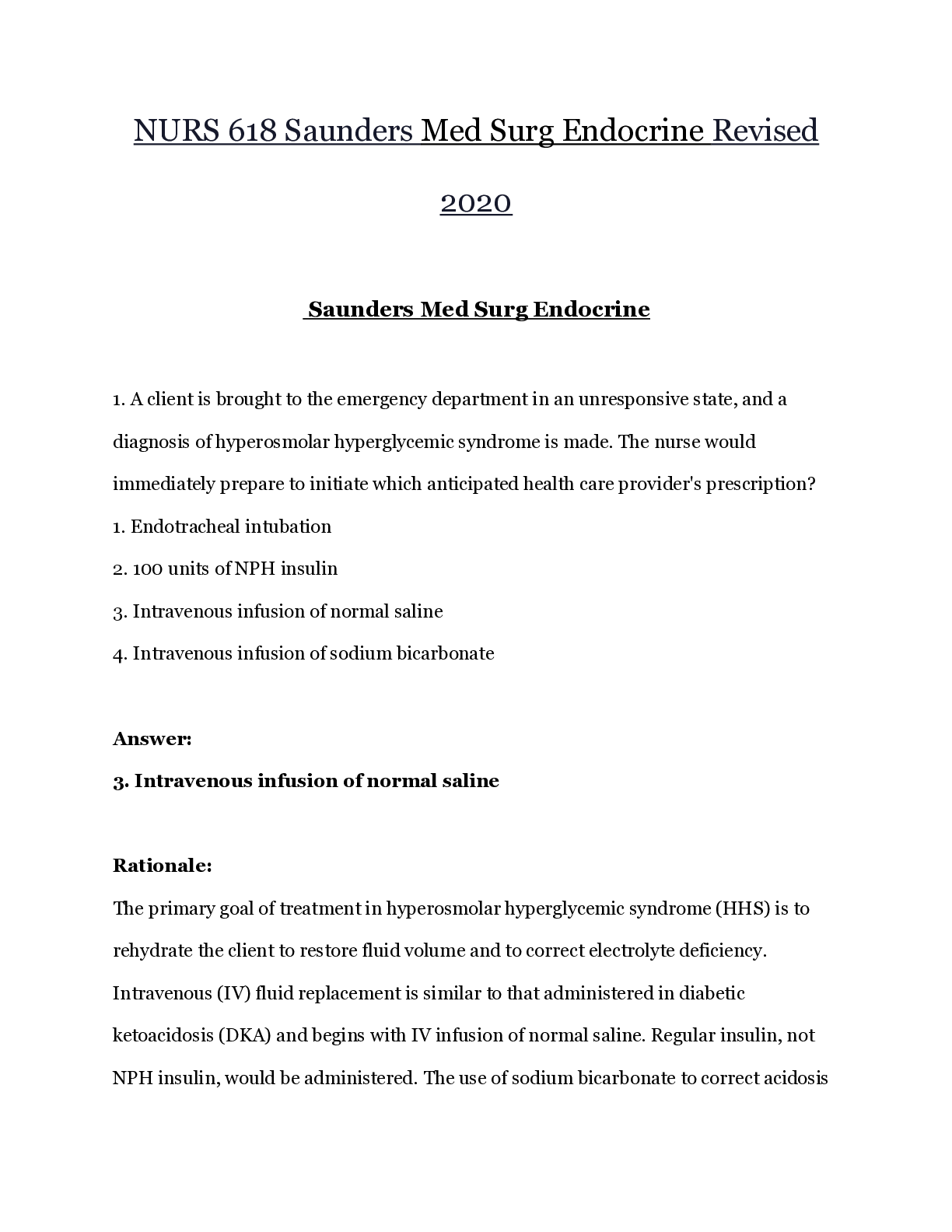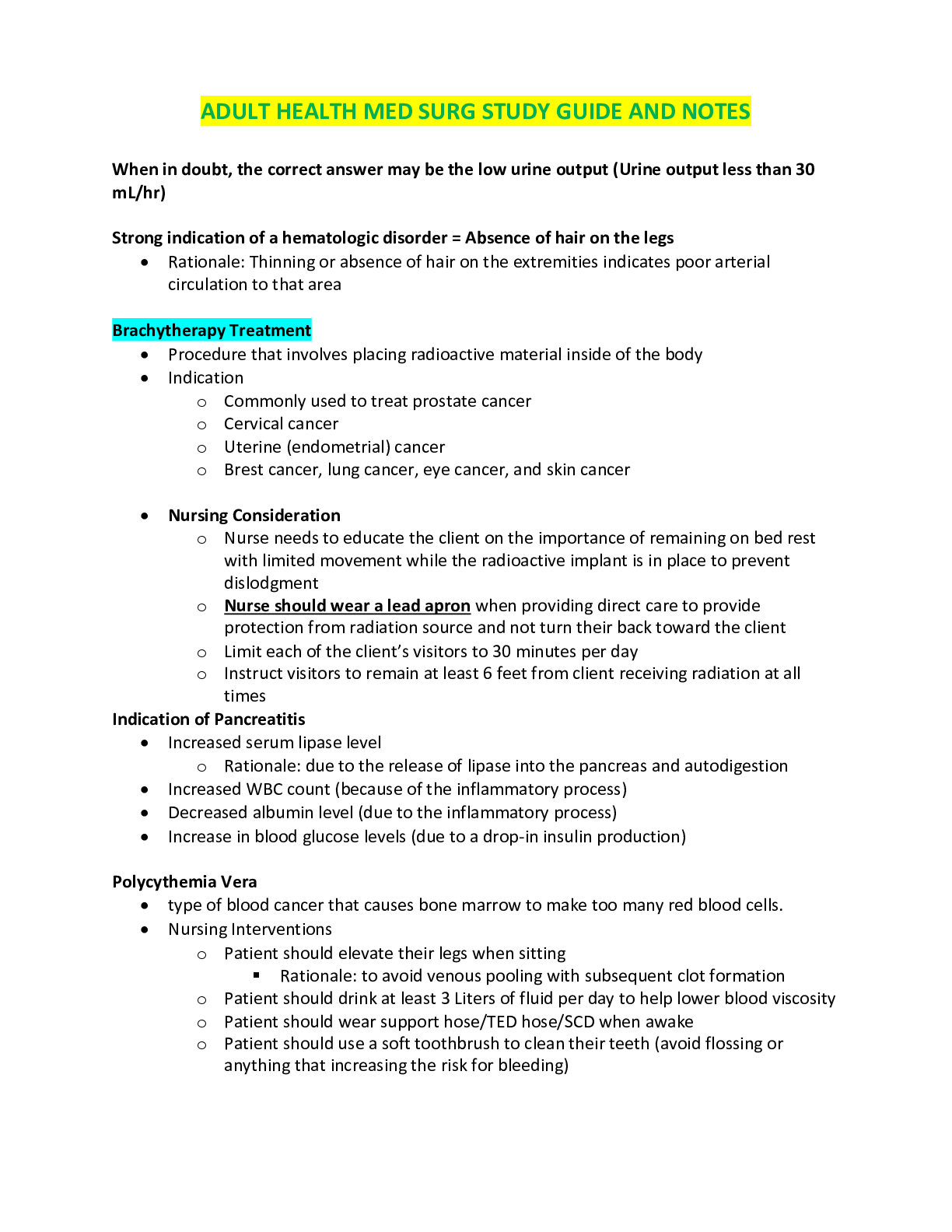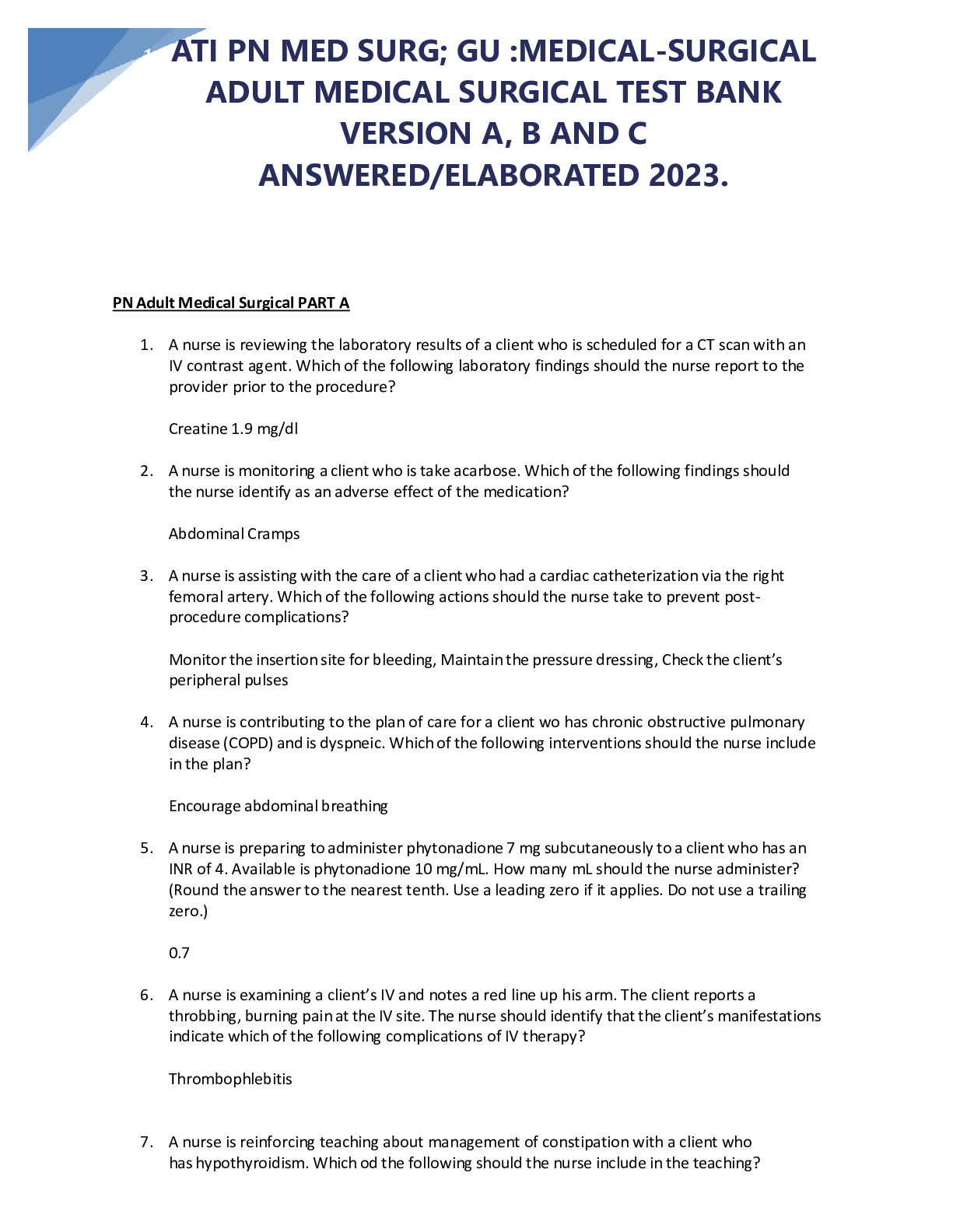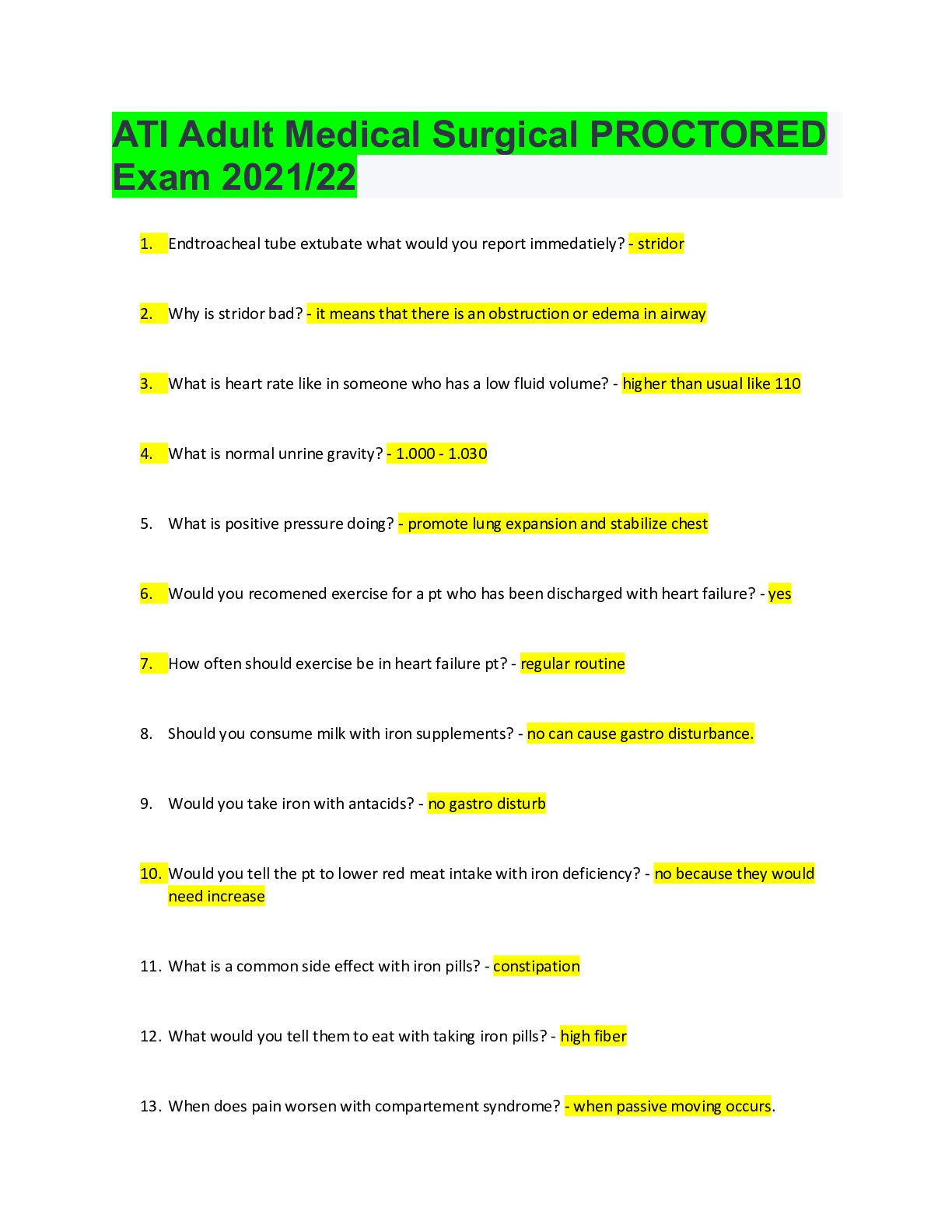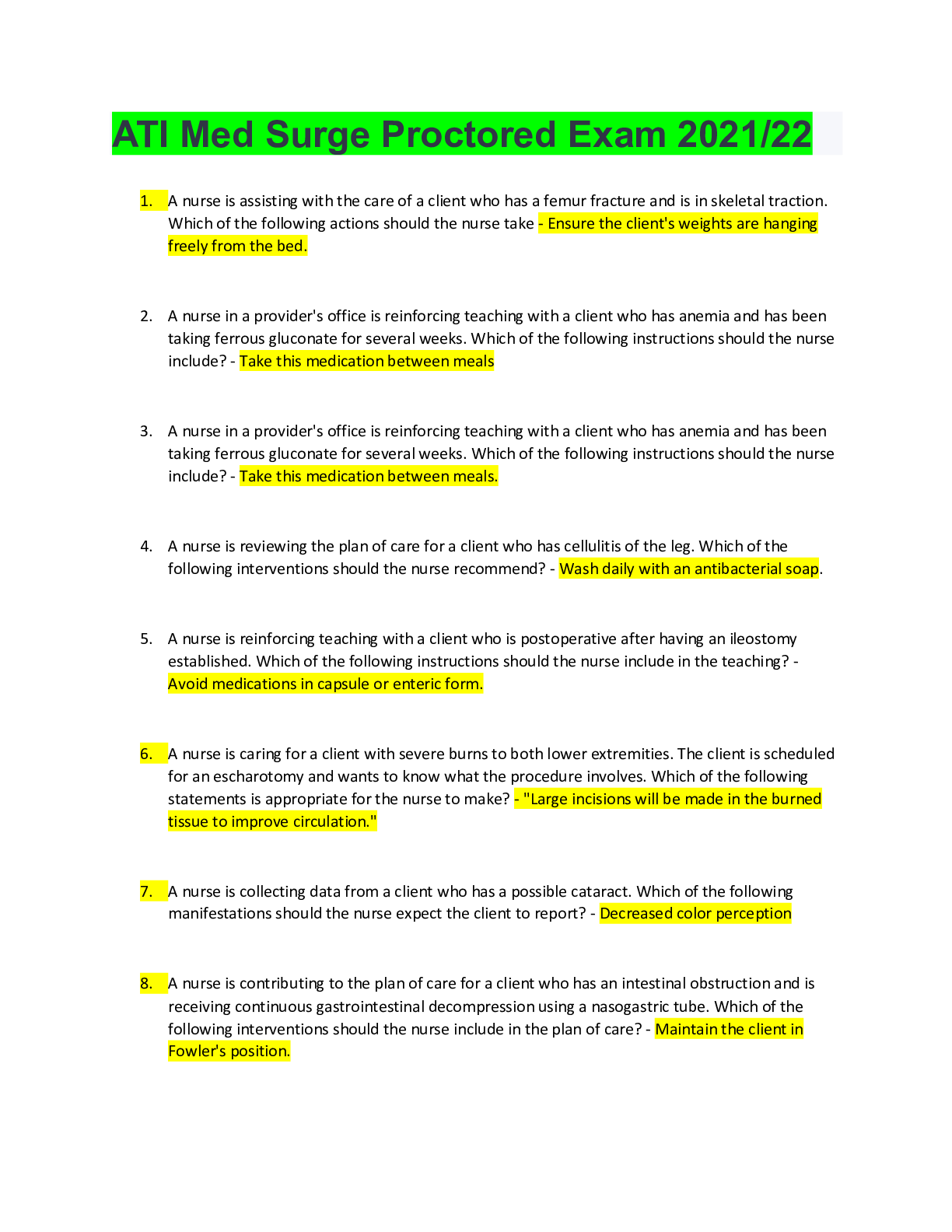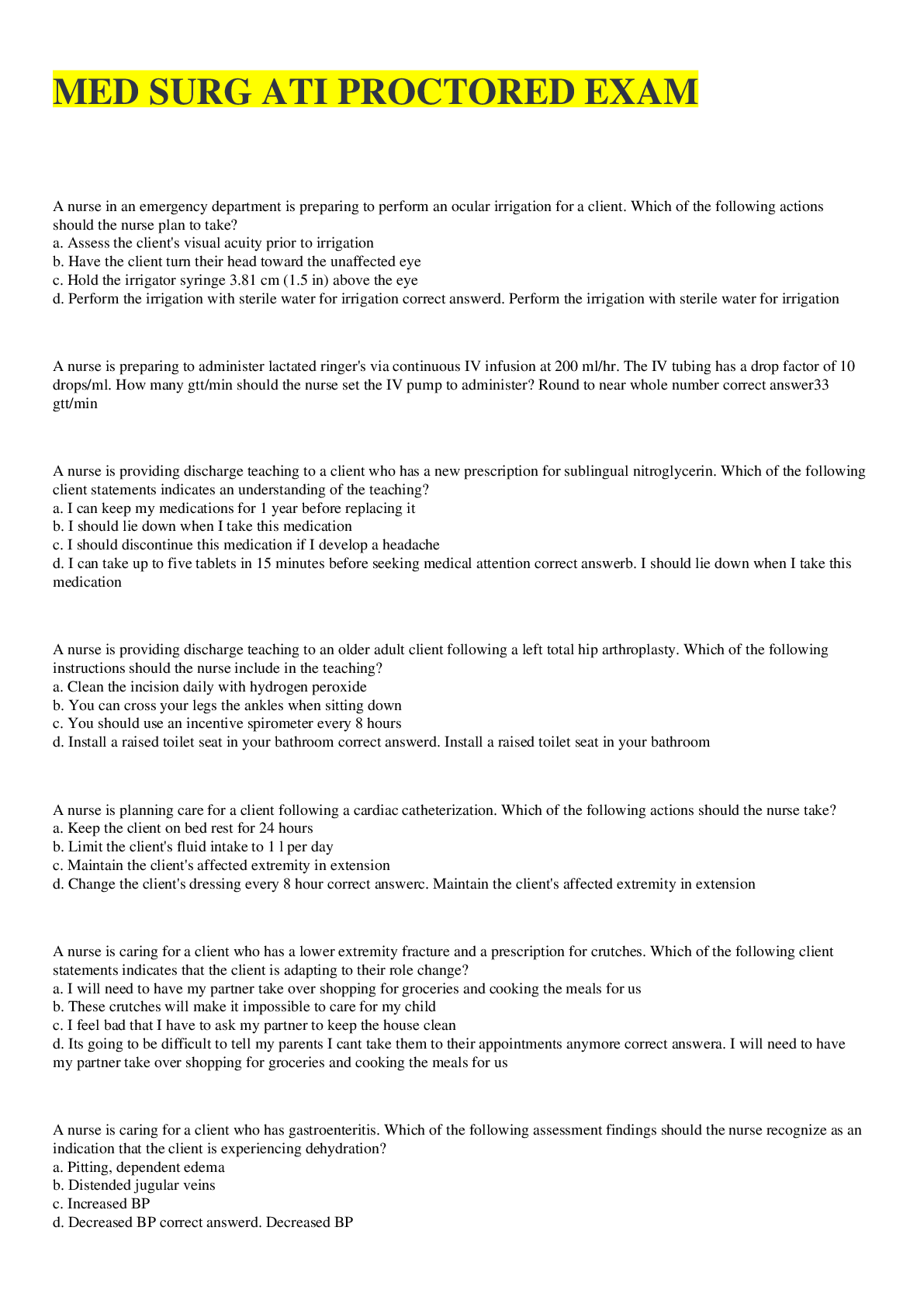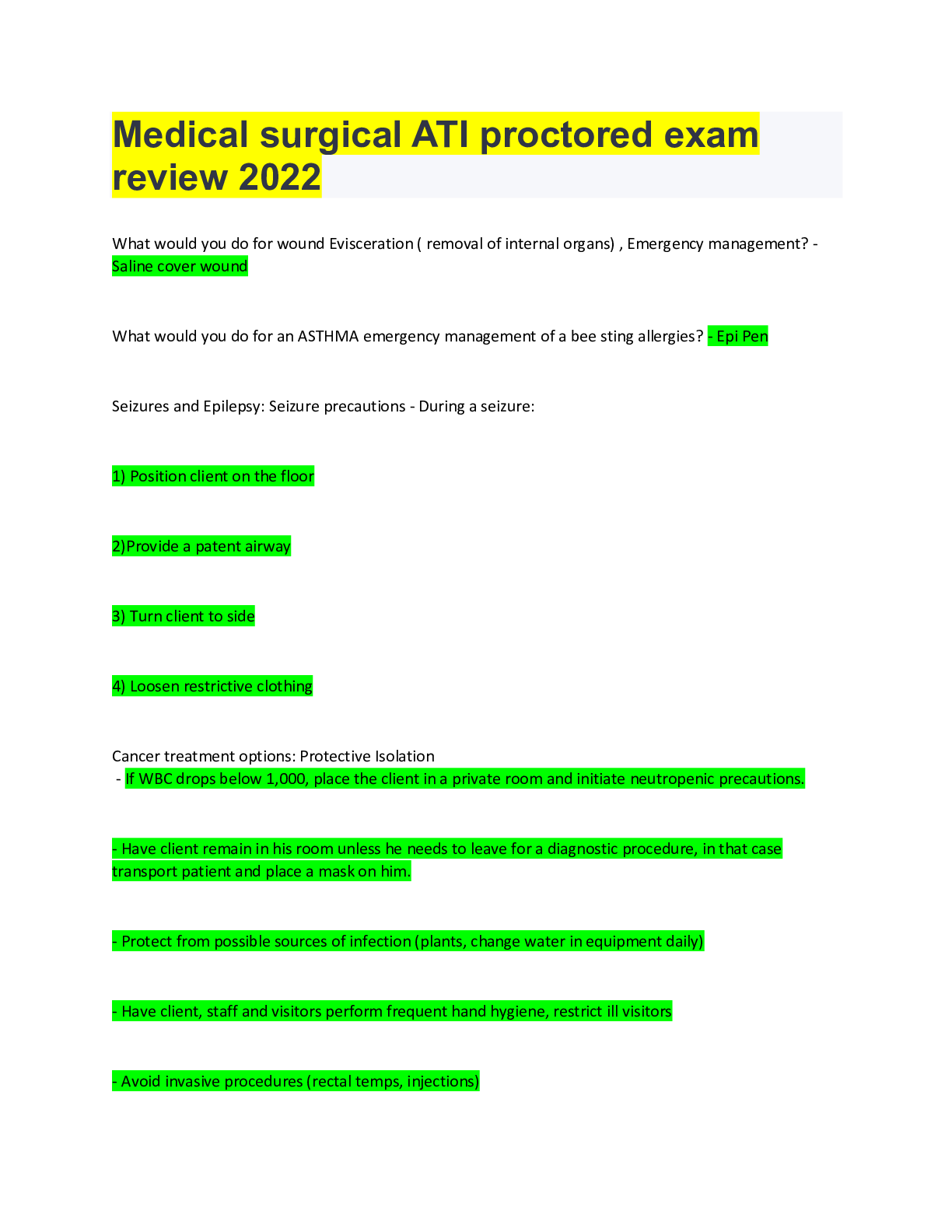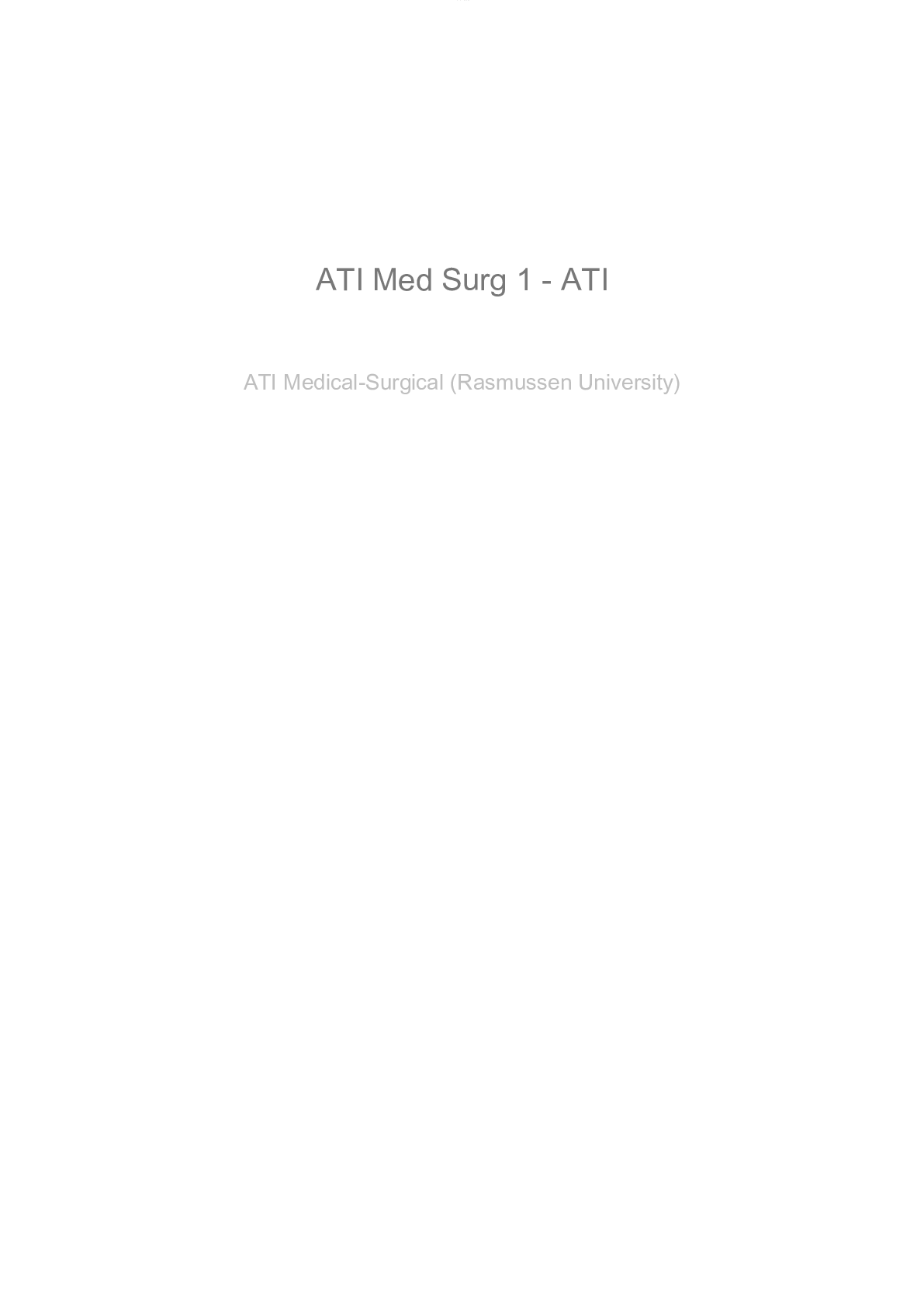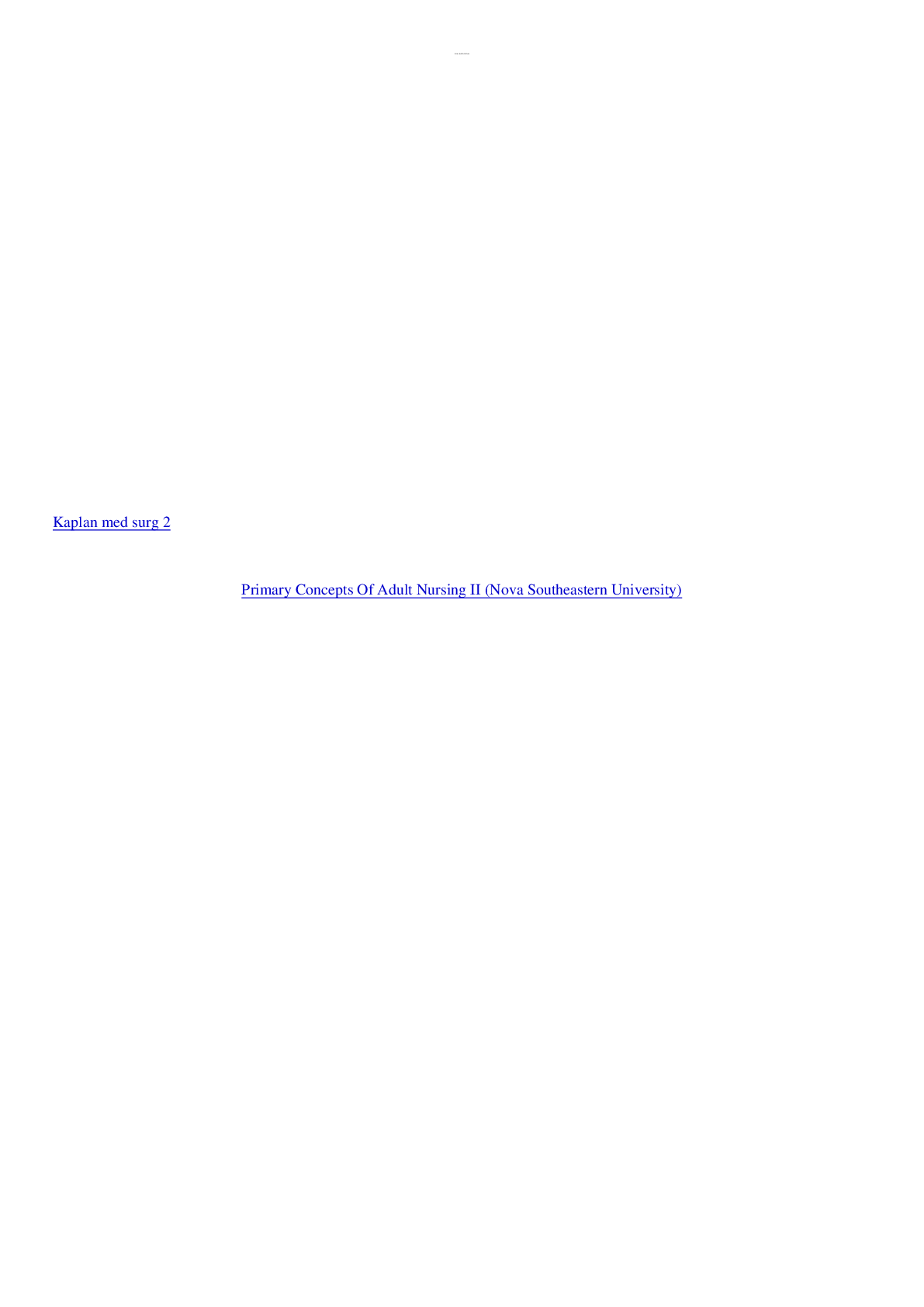*NURSING > MED-SURG EXAM > Chapter 26: Nursing Assessment: Respiratory System questions with correct answers (All)
Chapter 26: Nursing Assessment: Respiratory System questions with correct answers
Document Content and Description Below
Chapter 26: Nursing Assessment: Respiratory System 1. A patient with acute shortness of breath is admitted to the hospital. Which action should the nurse take during the initial assessment of the p... atient? 2. The nurse prepares a patient with a left-sided pleural effusion for a thoracentesis. How should the nurse position the patient? a. 3. A diabetic patient’s arterial blood gas (ABG) results are pH 7.28; PaCO2 34 mm Hg; PaO2 85 mm Hg; HCO – 18 mEq/L. The nurse would expect which finding? 4. On auscultation of a patient’s lungs, the nurse hears low-pitched, bubbling sounds during inhalation in the lower third of both lungs. How should the nurse document this finding? 5. The nurse palpates the posterior chest while the patient says “99” and notes absent fremitus. Which action should the nurse take next? 6. A patient with a chronic cough has a bronchoscopy. After the procedure, which intervention by the nurse is most appropriate? 7. The nurse completes a shift assessment on a patient admitted in the early phase of heart failure. When auscultating the patient’s lungs, which finding would the nurse most likely hear? 8. While caring for a patient with respiratory disease, the nurse observes that the patient’s SpO2 drops from 93% to 88% while the patient is ambulating in the hallway. What is the priority action of the nurse? 9. The nurse teaches a patient about pulmonary function testing (PFT). Which statement, if made by the patient, indicates teaching was effective? 10. The nurse observes a student who is listening to a patient’s lungs who is having no problems with breathing. Which action by the student indicates a need to review respiratory assessment skills? 11. A patient who has a history of chronic obstructive pulmonary disease (COPD) was hospitalized for increasing shortness of breath and chronic hypoxemia (SaO2 levels of 89% to 90%). In planning for discharge, which action by the nurse will be most effective in improving compliance with discharge teaching? 12. A patient is admitted to the emergency department complaining of sudden onset shortness of breath and is diagnosed with a possible pulmonary embolus. How should the nurse prepare the patient for diagnostic testing to confirm the diagnosis? 13. The nurse admits a patient who has a diagnosis of an acute asthma attack. Which statement indicates that the patient may need teaching regarding medication use? 14. A patient with acute dyspnea is scheduled for a spiral computed tomography (CT) scan. Which information obtained by the nurse is a priority to communicate to the health care provider before the CT? 15. The nurse analyzes the results of a patient’s arterial blood gases (ABGs). Which finding would require immediate action? 16. When assessing the respiratory system of an older patient, which finding indicates that the nurse should take immediate action? 17. A patient in metabolic alkalosis is admitted to the emergency department, and pulse oximetry (SpO2) indicates that the O2 saturation is 94%. Which action should the nurse take next? a. . 18. After the nurse has received change-of-shift report, which patient should the nurse assess first? 19. The laboratory has just called with the arterial blood gas (ABG) results on four patients. Which result is most important for the nurse to report immediately to the health care provider? 20. The nurse assesses a patient with chronic obstructive pulmonary disease (COPD) who has been admitted with increasing dyspnea over the last 3 days. Which finding is most important for the nurse to report to the health care provider? 21. Using the illustrated technique, the nurse is assessing for which finding in a patient with chronic obstructive pulmonary disease (COPD)? 22. Which action is appropriate for the nurse to delegate to unlicensed assistive personnel (UAP)? 1. A patient is scheduled for a computed tomography (CT) of the chest with contrast media. Which assessment findings should the nurse immediately report to the health care provider (select all that apply)? Chapter 27: Nursing Management: Upper Respiratory Problems 1. The nurse teaches a patient about discharge instructions after a rhinoplasty. Which statement, if made by the patient, indicates that the teaching was successful? 2. The nurse plans to teach a patient how to manage allergic rhinitis. Which information should the nurse include in the teaching plan? 3. The nurse discusses management of upper respiratory infections (URI) with a patient who has acute sinusitis. Which statement by the patient indicates that additional teaching is needed? ....................................................................CONTINUED...................................................... [Show More]
Last updated: 1 year ago
Preview 1 out of 117 pages

Reviews( 0 )
Document information
Connected school, study & course
About the document
Uploaded On
Mar 26, 2021
Number of pages
117
Written in
Additional information
This document has been written for:
Uploaded
Mar 26, 2021
Downloads
0
Views
48

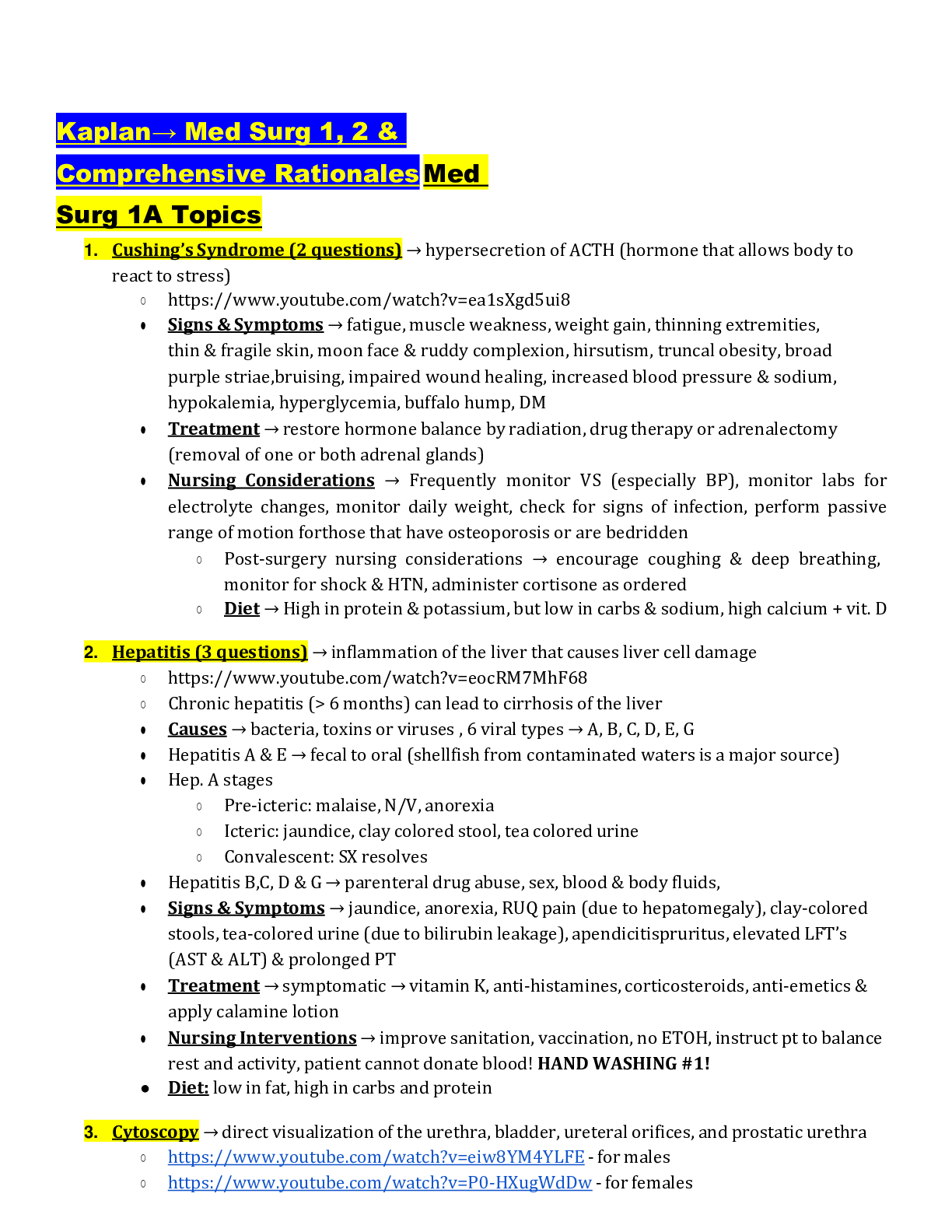

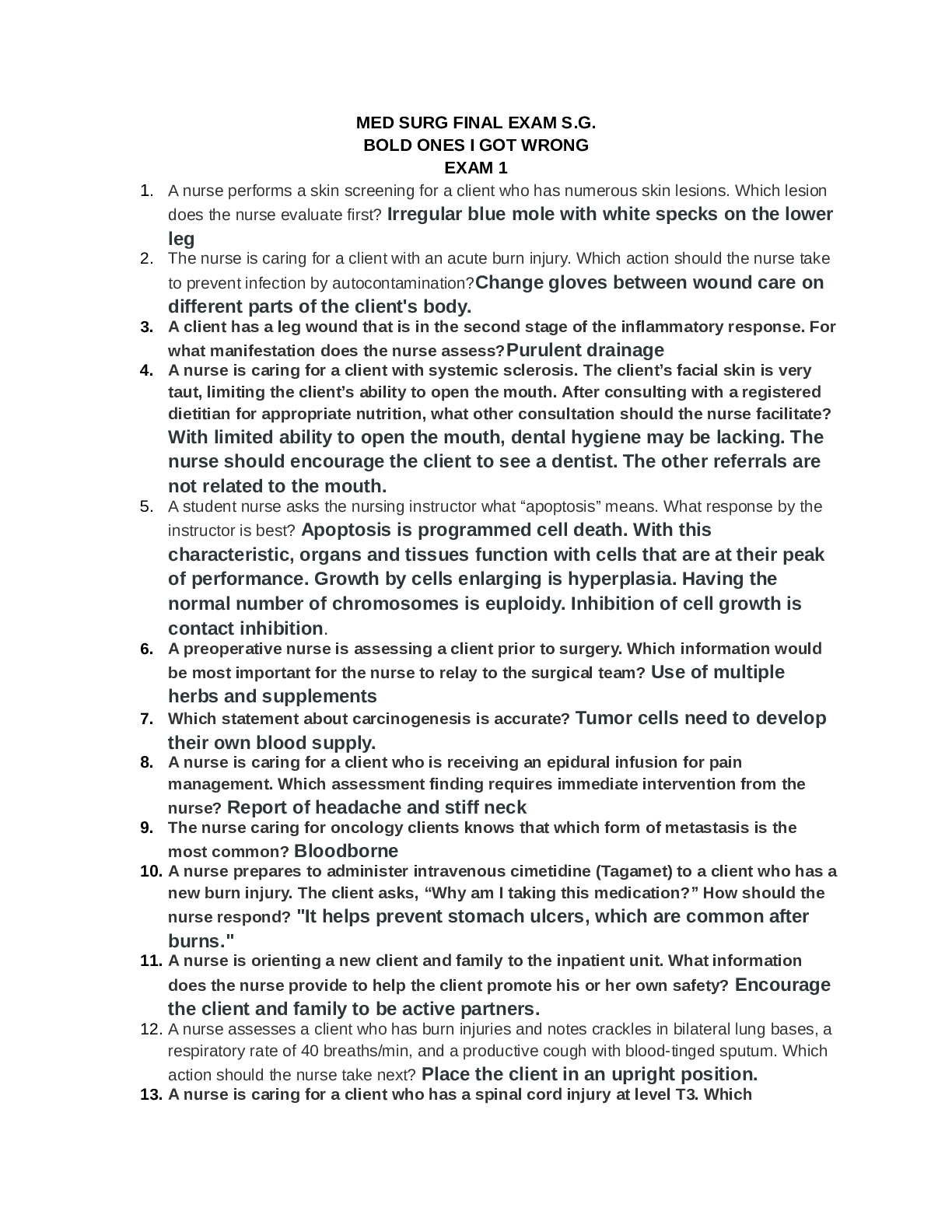
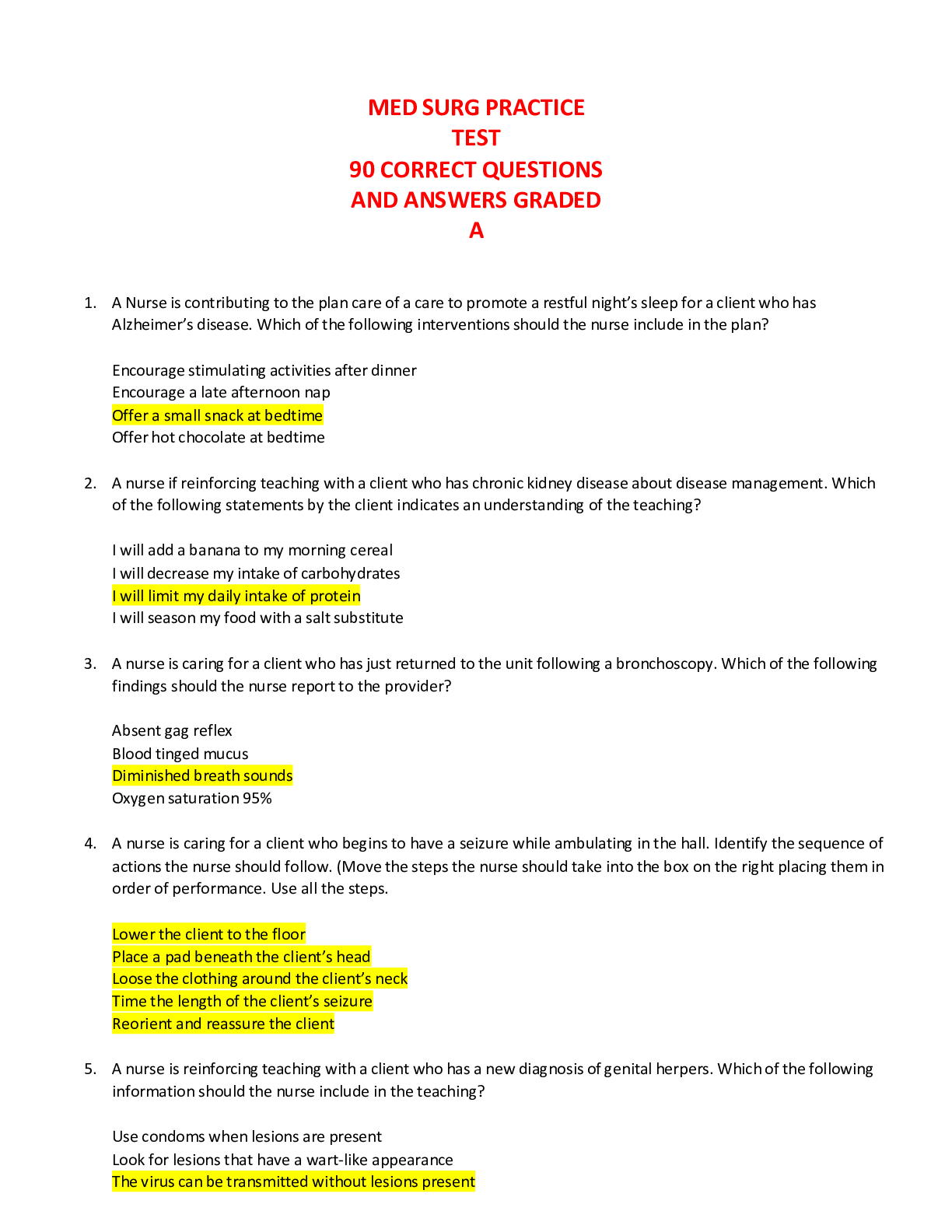


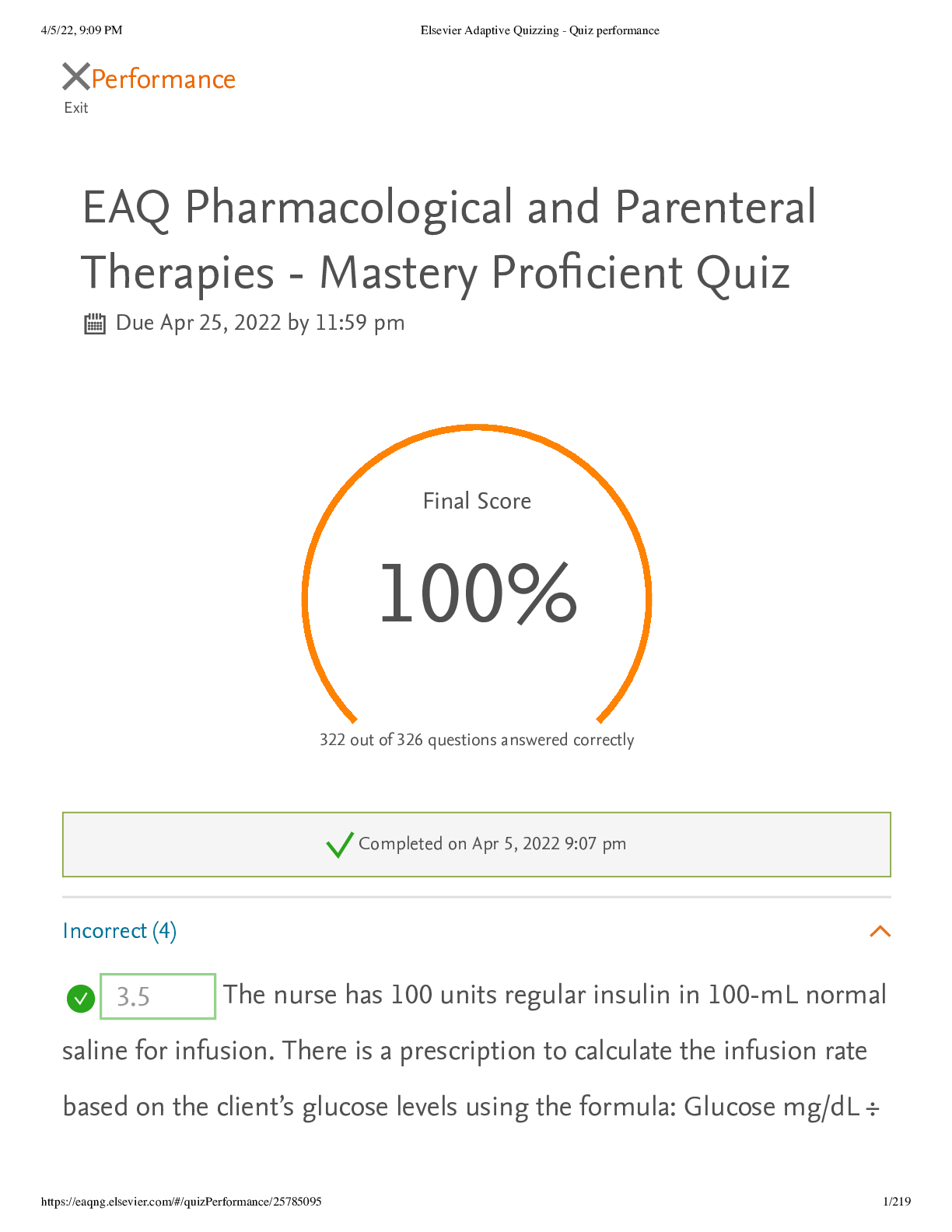
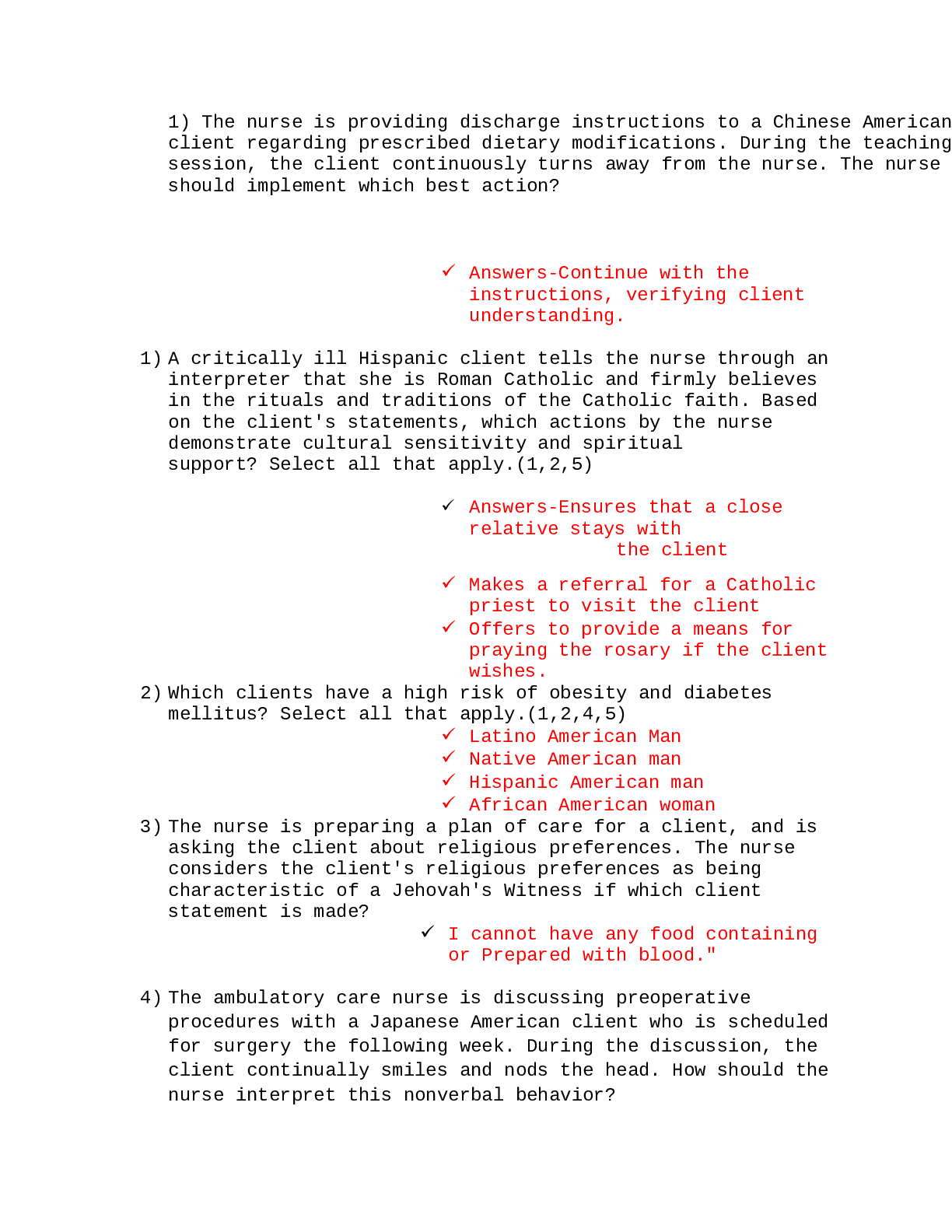
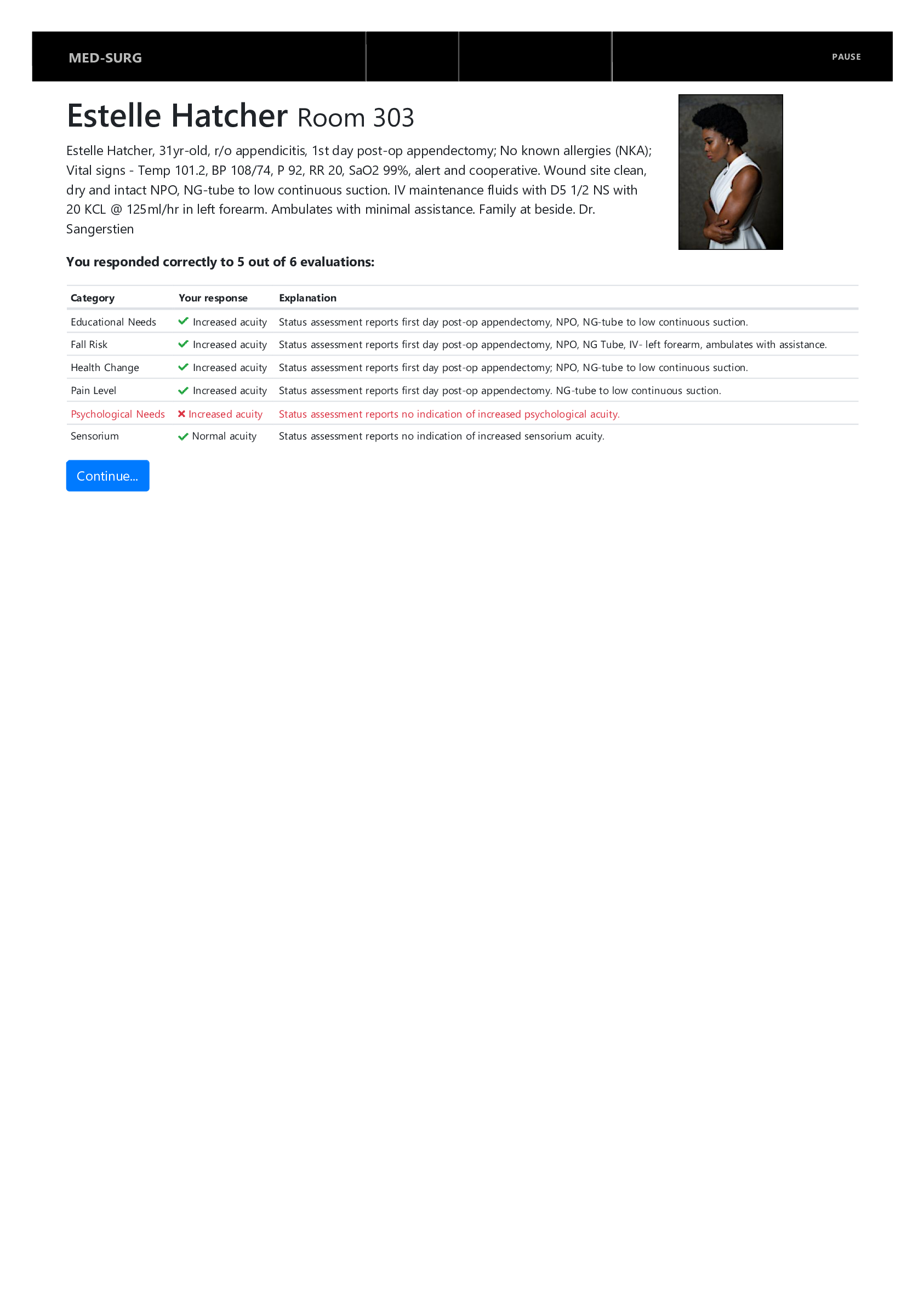



 (1).png)


